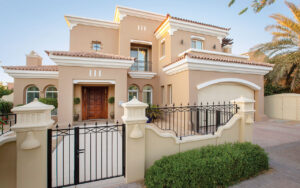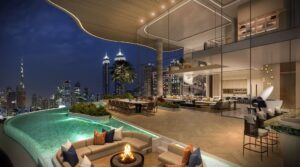Choosing the right combination of kitchen cabinet and countertop colors can make or break the look of your space. It’s not just about aesthetics—it’s also about creating harmony, flow, and functionality in the heart of your home.
Whether you’re planning a full kitchen remodel or just updating surfaces, this guide will walk you through the key principles, color pairing ideas, and practical tips to help you match your kitchen cabinets with your countertops like a pro.
Why Matching Matters
Cabinets and countertops take up most of the visual space in a kitchen. Poor color coordination can:
- Make the space feel disjointed or chaotic
- Clash with flooring or backsplash choices
- Reduce resale value
Smart color pairing enhances natural light, creates cohesion with adjoining rooms, and defines the kitchen’s style—modern, rustic, classic, or contemporary.
Start with a Style or Mood
Before choosing any colors, ask yourself:
What do I want this kitchen to feel like?
| Style | Cabinet Finish | Countertop Pairing |
|---|---|---|
| Minimalist | Matte white or taupe | Concrete or quartz in soft grey |
| Industrial | Charcoal or black | Butcher block or metal-look laminate |
| Classic | Ivory or navy blue | Marble or granite with veining |
| Warm & Rustic | Wood grain or walnut | Cream or earthy granite |
| Luxe & Bold | Forest green or deep blue | Gold-veined marble or quartz |
This initial mood board will guide your decisions down the line.
Choose a Dominant Surface
Always decide which surface you want to highlight:
- If you love bold countertops (e.g., marbled granite or dramatic quartz), choose neutral cabinets to balance them.
- If you’re investing in premium wood cabinetry, choose subtle countertops that don’t compete visually.
Tip: Pick your dominant material first (usually countertops) if you have fewer options available.
Popular Color Combinations That Work
1. White Cabinets + Dark Countertops
- Why it works: Classic and clean, with strong contrast
- Good for: Small kitchens (adds brightness while anchoring the space)
| Cabinet | Countertop |
|---|---|
| Pure white | Black granite |
| Off-white | Charcoal quartz |
| Shaker white | Concrete gray |
2. Grey Cabinets + White or Marble Countertops
- Why it works: Cool, elegant, and neutral
- Good for: Modern and transitional styles
| Cabinet | Countertop |
|---|---|
| Dove grey | White quartz with veining |
| Slate grey | Calacatta marble |
| Greige | Textured white granite |
3. Wood Cabinets + Light Countertops
- Why it works: Feels warm, timeless, and grounded
- Good for: Rustic, farmhouse, or mid-century styles
| Cabinet | Countertop |
|---|---|
| Oak or walnut | White or beige granite |
| Natural birch | Light quartz |
| Teak | Sand-colored stone |
4. Bold Cabinets + Subtle Countertops
- Why it works: Adds personality without overwhelming the space
- Good for: Statement kitchens
| Cabinet | Countertop |
|---|---|
| Forest green | Off-white quartz |
| Navy blue | Cream granite |
| Black | Pale gray concrete-look surface |
Countertop Material and Color Notes
Each material has its own color characteristics:
| Material | Common Colors | Best With |
|---|---|---|
| Quartz | White, grey, beige | Most cabinet colors |
| Granite | Speckled, earthy tones | Wood cabinets or dark tones |
| Marble | White with veining | Modern and classic pairings |
| Laminate | Wide variety | Budget-friendly, versatile |
| Butcher block | Warm wood tones | White, navy, or dark green cabinets |
Remember: Countertops often have undertones (warm or cool) — always match undertones with your cabinet color choice.
Don’t Forget the Undertones
One of the most common design mistakes is ignoring undertones.
- Warm undertones: Cream, beige, yellow, gold
- Cool undertones: Blue, grey, green
- Neutral undertones: Greige, taupe, off-white
Matching tip: Warm goes with warm, cool with cool. Mixing them creates visual dissonance unless you’re layering very intentionally.
Layout and Lighting Influence Perception
The same color combination can look different based on:
- Natural light – Light cabinets may look yellowish under warm sunlight.
- Cabinet positioning – Upper and lower cabinets in different colors can create a two-tone effect.
- Room size – Light colors expand space; darker ones anchor and define zones.
Designer Tips for a Polished Look
- Use samples at home – Don’t rely on store lighting
- Layer in texture – Matte vs gloss, stone vs wood for contrast
- Include backsplash early – It’s the bridge between cabinets and counters
- Stick to 2–3 core colors – Avoid visual clutter
- Use metallic hardware or fixtures – To balance cool or warm palettes
Step-by-Step: How to Choose Your Combo
- Pick your style – Modern, farmhouse, classic?
- Choose your hero surface – Cabinets or countertops?
- Define the color tone – Warm, cool, or neutral?
- Test in your space – Check samples in different lighting
- Add contrast or cohesion – Use backsplash, flooring, or wall paint
- Finalize hardware & finishes – Chrome, gold, matte black?
Matching your kitchen cabinet colors with countertops doesn’t have to be complicated. Start with a vision, stay consistent with undertones, and test your selections in real lighting. Whether you want a soft, calming palette or a bold contrast, a well-matched color combo will make your kitchen feel intentional, stylish, and uniquely yours.
This guide gives you a foundation to build your perfect kitchen — one swatch and sample at a time.

)
)
)
)




